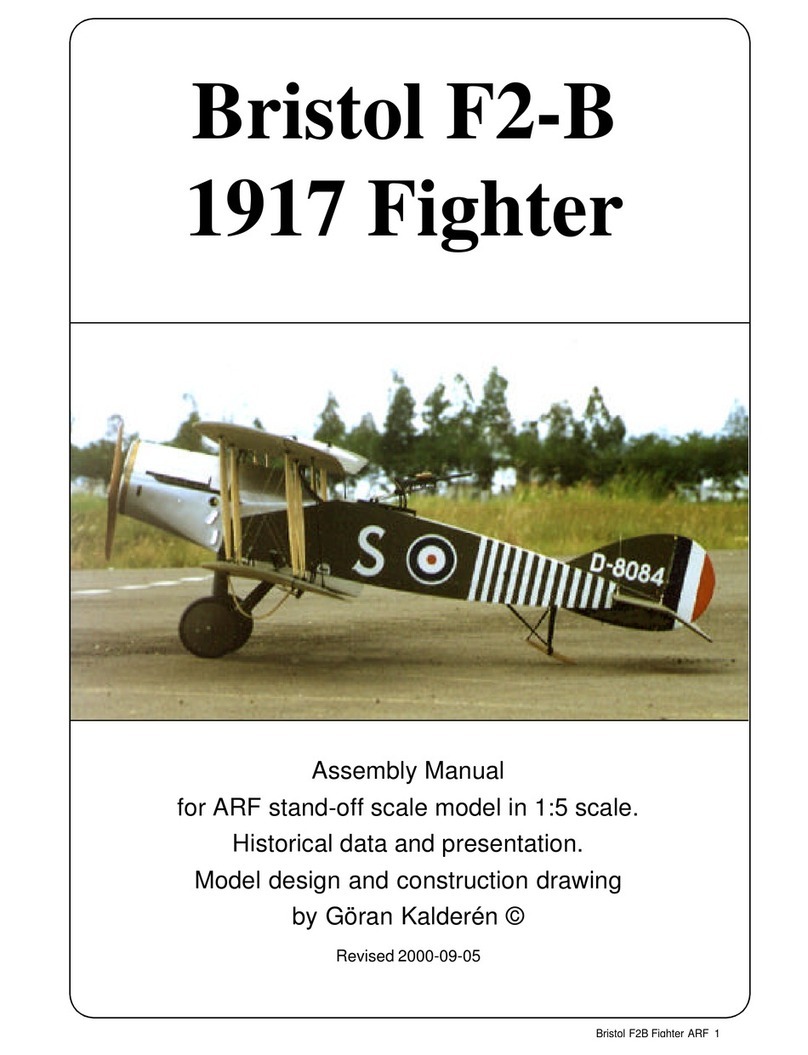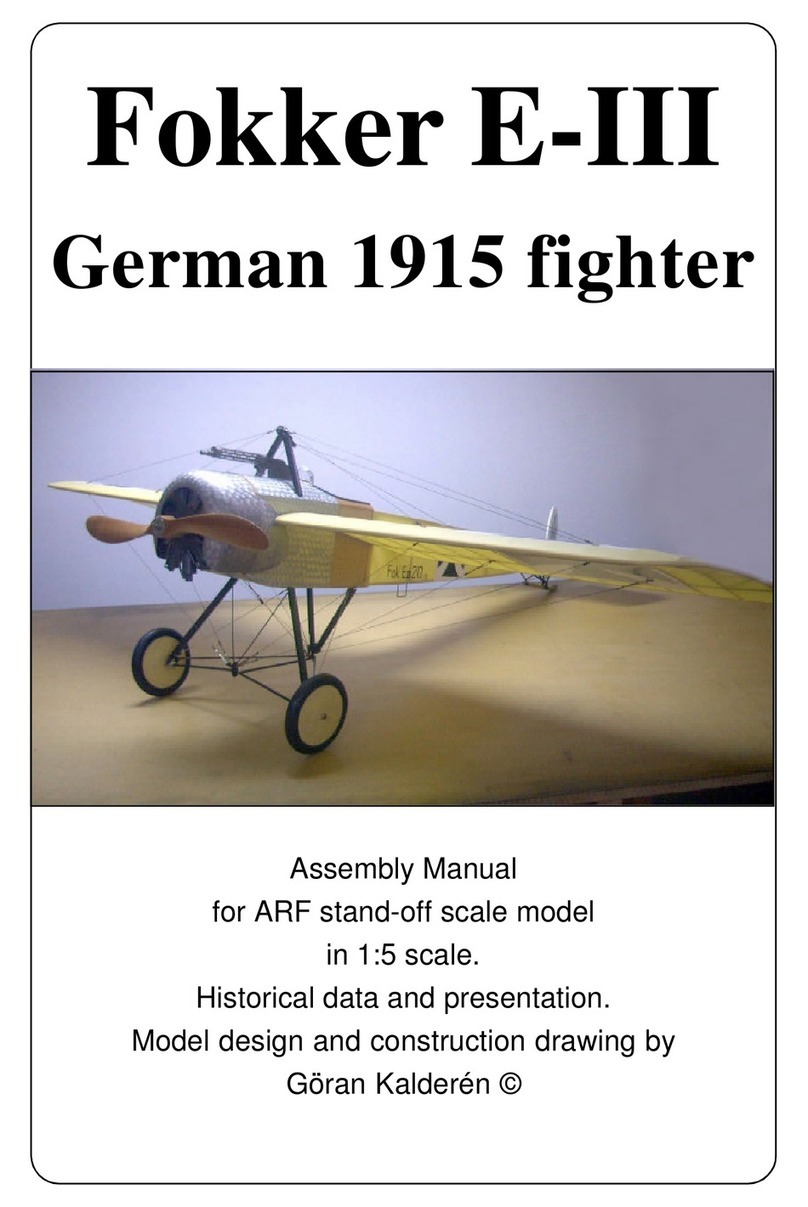de Haviland DH4B ARF 3
The de Havilland (Airco) D.H.4 (1916)
Generally accepted as being the best single engined day bomber
to serve with any of the combatants in World War I, the de
Havilland D.H.4 first flew as a prototype at Hendon in August
1916. Its flying qualities, speed and performance generally were
excellent, and were the basis of the success achieved by this
competent two-seater, 1,449 of which were subsequently built
in Britain.
The D.H.4 was a well designed and strongly built aeroplane,
and was fast enough to outrun all but the speediest German
Fighters. If it had a serious fault at all, this was probably the
unusually great distance between the front and rear cockpits,
which made communication between pilot and observer during
operations difficult if not actually impossible. This layout had
been adopted to give the pilot the best possible view downward
past the bottom wing for aiming the 460lb. of bombs which the
D.H.4 could carry.
The prototype had been powered by a 230 h.p. B.H.P. engine,
but it was decided to install the 250 h.p. Rolls-Royce Eagle in
production aircraft. However, a serious shortage of Rolls-Royce
engines led to some production batches being completed with
200 h.p. R.A.F.3a, 230 h.p. Puma or 260 h.p. Fiat A.12 engines.
D.H.4's in R.F.C. service were armed normally with a fixed,
synchronized forward gun for the pilot and one or two free-
firing Lewis guns in the observers's cockpit. Those with
R.N.A.S. squadrons had twin Vickers guns for the pilot and
could carry depth charges instead of bombs. Some R.N.A.S.
D.H.4's were later transferred to the R.F.C.
Two D.H.4's were experimentally fitted with 1 1/2 pounder
C.O.W. guns, firing upward through the center-section; these
were intended for attachikin Zepplins, but Germany suspended
airship raids on Britain and this version was not produced in
quantitty.
The other major wartime user of the D.h.4 was the American
Expeditionalry Force, for whom nearly 5,000 of these aircraft
were buitlt with 400 h.p. Liberty 12 engines; nearly 2,000 of
these reached France , and over 600 were in front line service
when the war ended. Apart from its career on the Western Front,
the D.H.4 also gave useful service in Italy, Msacedonia,
Mesopotamia, Palenstine and Russia.
Country of origin Great Britain
Purpose Bomber
Manufacturer Aircraft Manufacturing Co.
In operational use 1917/1918
Brief Technical Details
Engine: 375 h.p. Rolls-Royce Eagle VIII
Wing Span: 42ft 4.63 in
Length: 30ft 8 in
Height: 10ft 0 in
Weight empty: 2,387 lbs Loaded 3,472 lbs
Max Speed: 143 m.p.h. at Sea Level
Ceiling: 22,000 ft
Range: 435 miles
Armament: One or two fixed, forward-firing Vickers and one or
two free-firing Lewis machine guns; plus 460lbs of bombs.
The Model
We have chosen the scale of 1:5 rendering a model
size that is easy to fly, but also relatively easy to transport.
Both the upper and the lower wing panels can be removed
for transport which gives very limited requirement for trans-
portation.
Rudder is controlled by pull-pull cables from the rud-
der bar and the elevator by a pull-pull bell crank coupled to
the control column in a scale manner. The tailskid is fully
functional but not stearable for ease of ground handling
(scale). Lower wing ailerons are controlled by pushrods from
one or two servos in the fuselage and the upper ailerons are
coupled to the lower with adjustable link rods.
The prototype was equipped with a Saito 1.20 4
cycle engine that gives ample power for this fighter. With
this engine the airplane is capable of some advanced
manoeuvers which you can demand from a WW1 biplane
fighter. The plane is a gentle flyer and it is recommended to
mix the rudder with the ailerons if you can.
Specifications:
Wingspan: 101.57” (258 cm)
Length: 51.6” (183 cm)
Wing area: 2588 sq" (167 dm²)
Weight: 16.2 lbs (7350 g)
Wing load: 14.4 oz/sq' (44 g/dm²)
Engine: 1.08 2-stroke -1.20 4-stroke
The K&W model of the DeHavilland D.H.4
Detail on Tail Group





























